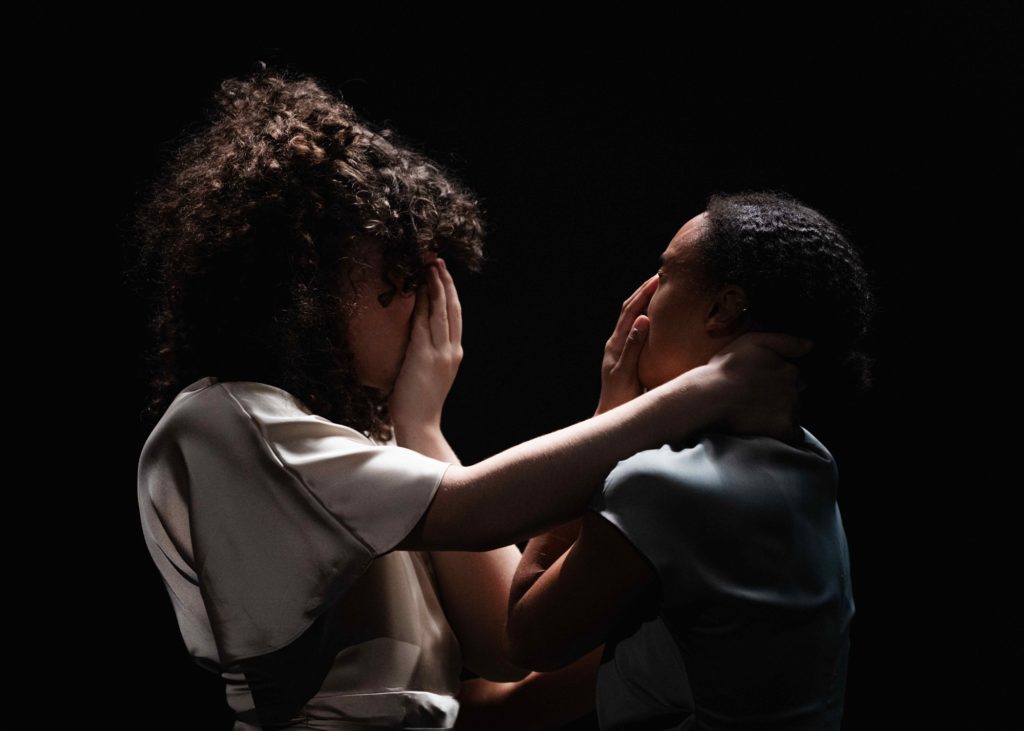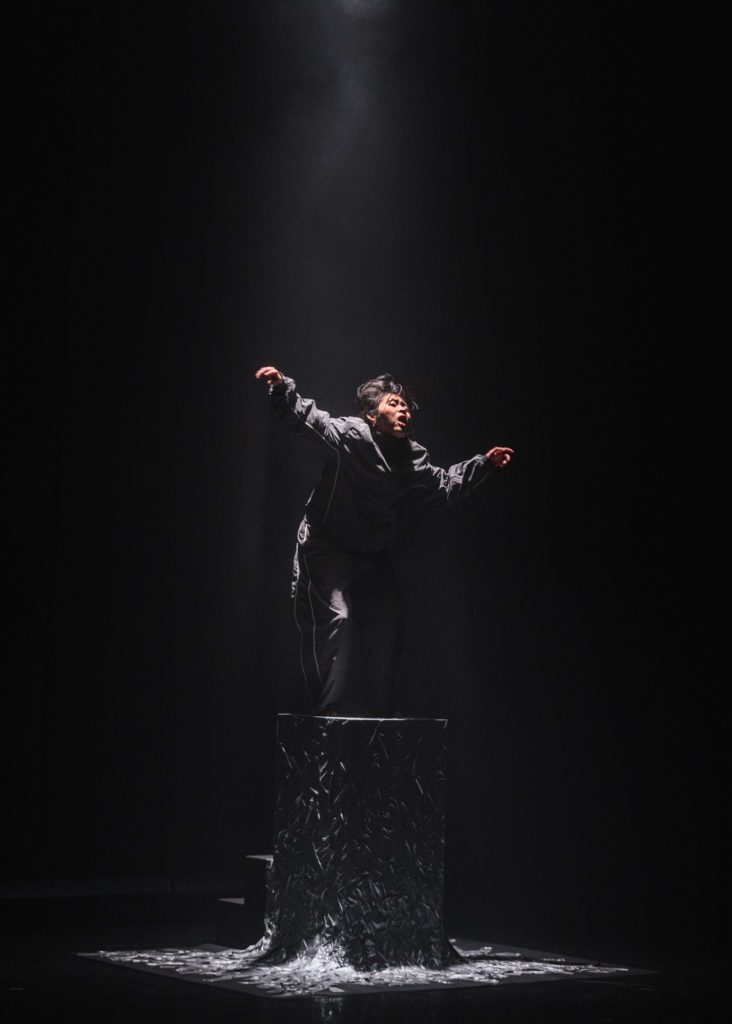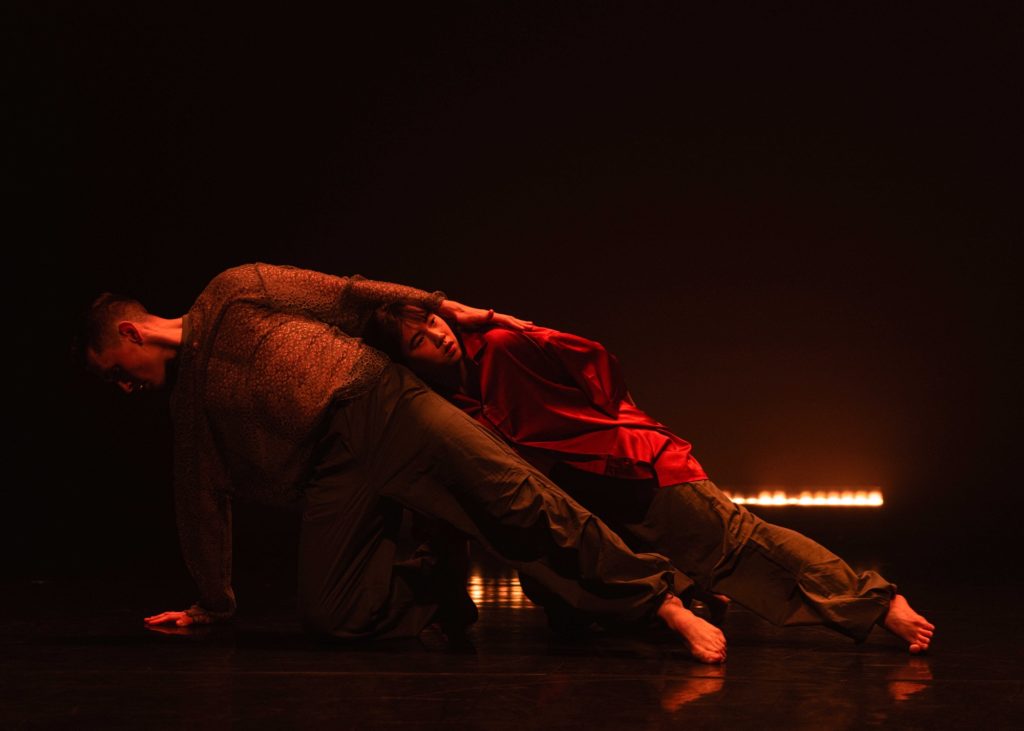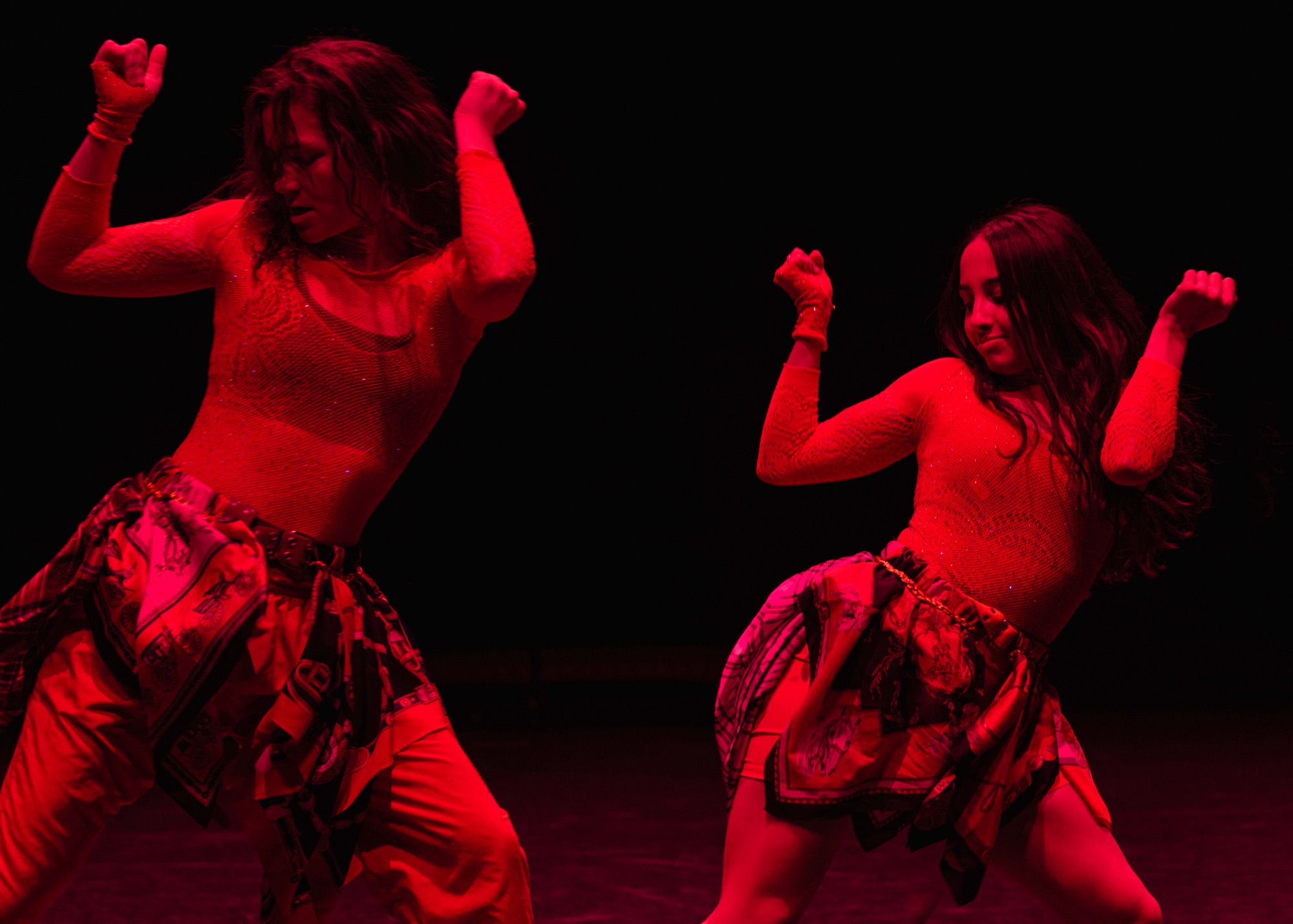Next week, Sadler’s Wells Young Associates – Elisabeth Mulenga, Blue Makwana, Roseann & Sula (aka Tough Boys Dance Collective) and Maiya Leeke – swoop into London to showcase their new choreographic work in Four. Sadler’s Wells’ Young Associates programme is a two-year programme in which dance artists and d/Deaf and disabled choreographers receive financial support, mentoring and training and the opportunity to present work on Sadler’s Wells’ stage.
We sat down with the dance artists to talk about their practices, what they think their roles as artists are, and what audiences can expect from watching Four.
DAJ: Tell us about yourself – why do you dance?
Elisabeth Mulenga: Power, freedom, self-expression. I’ve always wanted to perform, and I’d say that’s why I pursued dance as a career. It was integrated into my childhood, at church, school, in the Disney Channel musicals and street dance films, and I was quite addicted to it. I think I enjoyed that I couldn’t be reprimanded for what I expressed in dancing, people just had to watch. Performing aside, I love social dancing, and I love dancing alone; I find feelings of catharsis, presence, and fantasy that I don’t find in anything else.

Blue Makwana: I am a London based South Asian and Caribbean Dance Artist, working as a Dancer, Choreographer and Teacher. I dance because I am in a privileged position where I can be an active contributor to the arts scene. Without the arts scene, I believe there is lack of hope, there is a lack of light, and there is a significant lack of humanity within entertainment.
Roseann & Sula: For us as a collective, it’s maybe more about why we dance together? We choose to dance together so often because it immediately creates a sense of sharing something or saying something between us without the need for words. We both love dancing, especially clubbing and we find a lot of solace in club spaces. It’s also maybe something to do with our Scottish heritage, growing up going to ceilidhs with everyone we know, we’ve seen community as something that inherently takes form – and always has – within dancing.
Maiya: I dance to feel. I love to explore the interweaving exchange between musicality, function of my wheelchair, and artistic elegance to unlock what my physical language of expression can be.
DAJ: Can you tell us about the piece you’re choreographing as part of the Young Associates Four?
Elisabeth: My piece explores the fragmented and distorted perceptions of a mind consumed by an obsessive relationship with God. It’s ultimately a playful and strange reimagination of my Christian childhood, reflecting the disorientated, irrational and heightened teenage reality. Like much of my work, it examines grief and dysfunctional relationships with ourselves and others. It’s inspired by non-naturalistic cinema, gothic cathedrals and all the gifted, blaspheming musicians who use biblical references to describe toxic relationships. The cast of dancers includes Kirke Gross, Magnus Westwell, Steffi Fashokun and Adhya Shastry.
Blue: The piece I am choreographing, titled TOASTED, lightly touches on the navigational journey people often experience when the act of blacklisting occurs. Over the recent years, this culture has surged, and it has become more evident that it is a go-to method and practice. I do not have the answers on how this can be managed or controlled. I do however think it is important to shed light on how damaging and destructive it can be for a person’s mental health.
Roseann & Sula: Our work is called DUGMEAT.
The themes of the work are things we’ve been talking about for years, things that feel like they are forever playing on our minds; the climate, the current political landscape around us, the job market as emerging artists, technology moving faster than our brain can comprehend, and all the personal stuff that comes along with just being human in a post capitalist structure.
DUGMEAT isn’t necessarily about any one thing – it’s about feeling overwhelmed, oversaturated and under pressure. Physicalising the expectation to constantly do better, do more, do less, be something. It’s about knowing that things can be shit, knowing we must carry on and still acknowledging how lucky we’ve got it.
The work also pulls on ideas of generational experience, set within a sub-human dystopia, we are studying nihilism, queerness and animalism. The work moves between the sticky walls of the queer underworlds, and the barren wasteland of a future hellscape. It doesn’t necessarily strive to come up with solutions or an end, but just platforms the power in feeling together.

Maiya: To Loss and Hope seeks to express the extraordinary inner challenges we face when through illness, we lose parts of ourselves we love the most. However, through the power of hope, we unleash piercing light that will undoubtedly shine again, different, but no less bright.
Making this show, at the same time as living with a chronic illness, has been an enormous challenge. But challenges, and how we respond to them, is at the heart of all our lives. So, I wanted to speak, and move, to that.
DAJ: What is your role as an artist?
Elisabeth: I’ve always referred to a quote by Cesar A. Cruz that says ‘Art should comfort the disturbed and disturb the comfortable’, I wouldn’t say this is the function of all art, but I definitely enjoy disrupting comfort, and confronting facades with an uncanny, choreographed facade. I am also big on remembering, and the importance of people’s lives and perspectives being honoured, particularly marginalised people. My role is to dedicate space and time to pieces that move people, that could remind them of themselves, and what has been felt.
Blue: I believe that my main role as an artist, in my current position, is to create a safe and holistic space for other artists to thrive in. It is also within my role to create work which aims to entertain and inspire.
Roseann & Sula: We feel like our role as artists is to output honest responses to the things we take in, making physical of things that can be hard to put into words.
We know that using our art as a critical voice is a vital act of resistance and visibility, and is something that should be encouraged in everyone. We both feel that in many ways our job as artists is to find pockets for creativity and possibility in everything we do. Using this as a sort of ongoing practice in our lives, our art is a tool for formatting how we feel and speaking on things we care about in the hopes that others truly see it.
Maiya: For me art is there to help us all figure out how to live. Art has always helped me process and discover life, never more than in current times. But I know that everyone’s lives have moments of loss and hope – so the hope is that people get something from the work. I hope for there to be a shared moment of understanding that acknowledges our ability to keep going and find glimpses of beauty no matter what.

DAJ: What’s next for you?
Elisabeth: After this piece, I’m going to continue developing my first full-length solo work, I hope to perform it in a range of contexts next year, like chapels, historic houses, or in nature. I’ll continue performing, creating, learning. Eventually, I’d like to be in a feature film, so if someone would like to give me my acting debut that would be much appreciated.
Blue: More exciting things…which I am very grateful for.
Roseann & Sula: This is a question we’re being asked a lot right now! We have been super motivated by this work and obviously in some ways just want to jump into the next big thing but also want to let the dust settle. We are firm believers that artists also must live lives outside of making so they actually have things to say. We do have some exciting projects coming up in the new year but honestly once the show is done we are both looking forward to recalibrating; spending time with family and friends, working in other jobs, partying and getting back in the studio.
Maiya: I plan to continue to question who I am as an artist. I am fascinated by the artistry within me I am yet to discover. I plan to broaden my creative parameters and continue to expand on where my possibilities can be. My forever plan is to continue to seek possibility in all I do – both as an artist and a human. Oh, and find the joy along the way. For me, joy must be at the heart of it.
Four debuts at Sadler’s Wells on 15th October. Tickets here.
